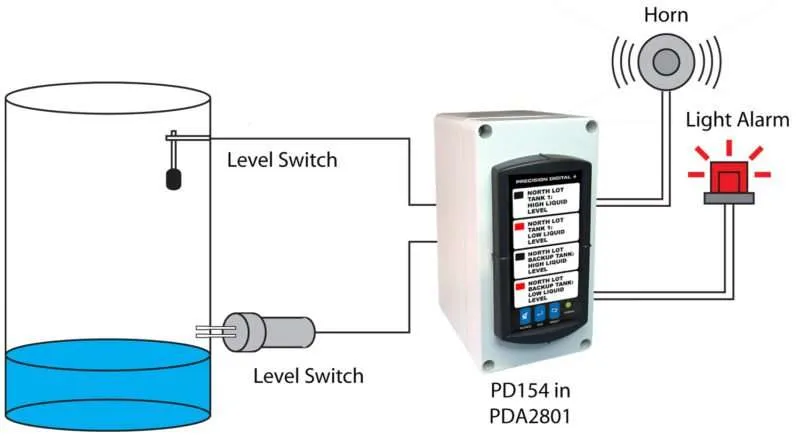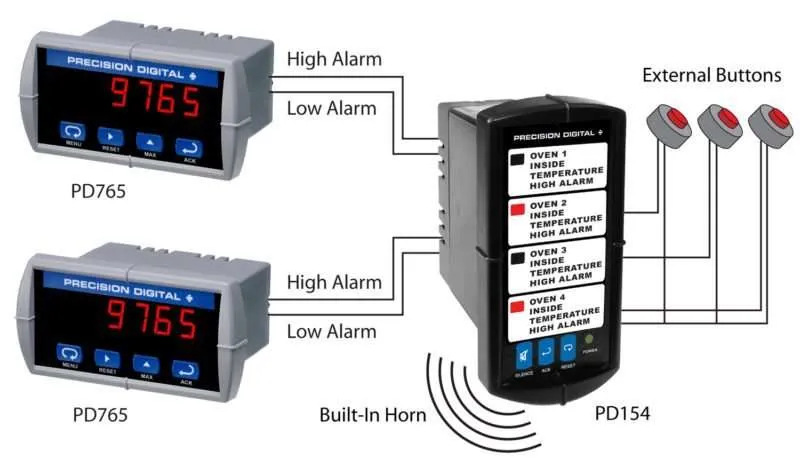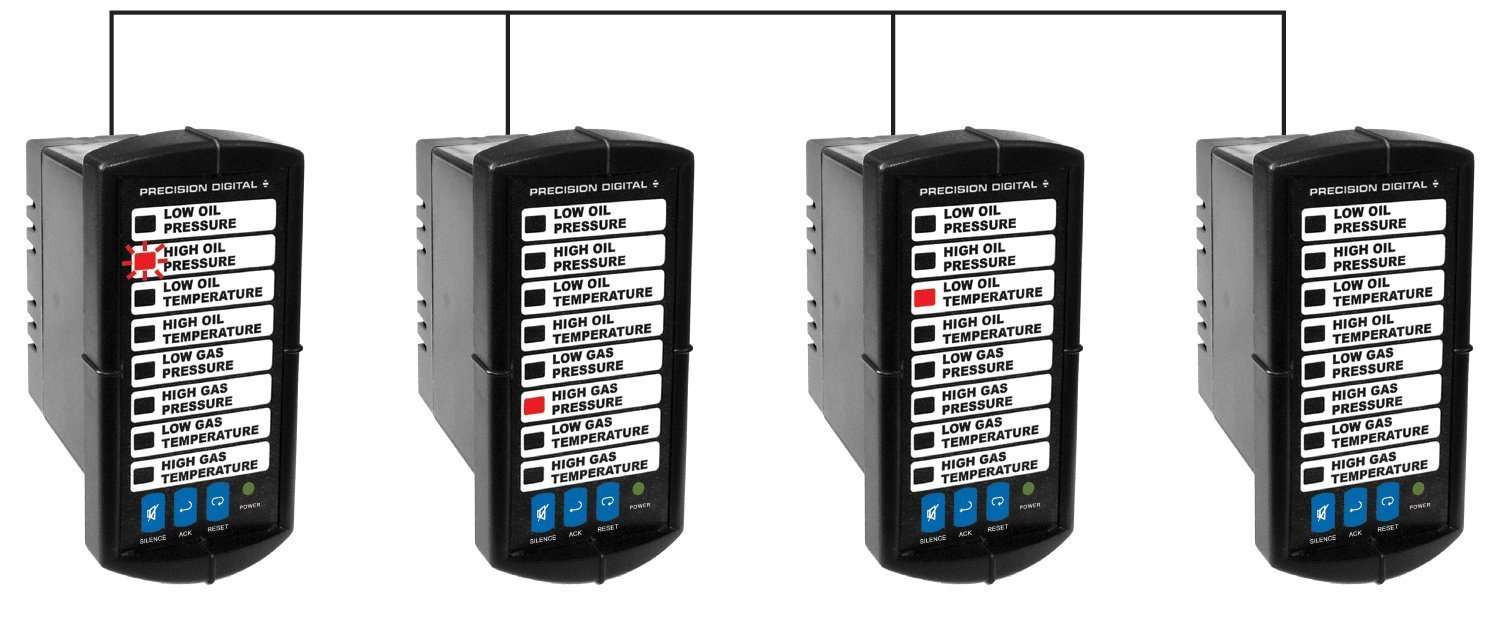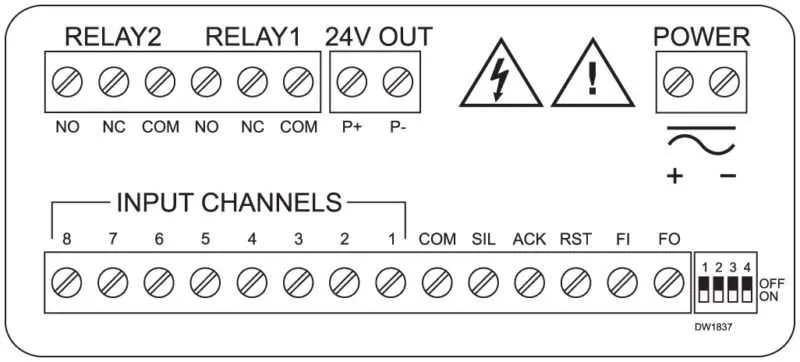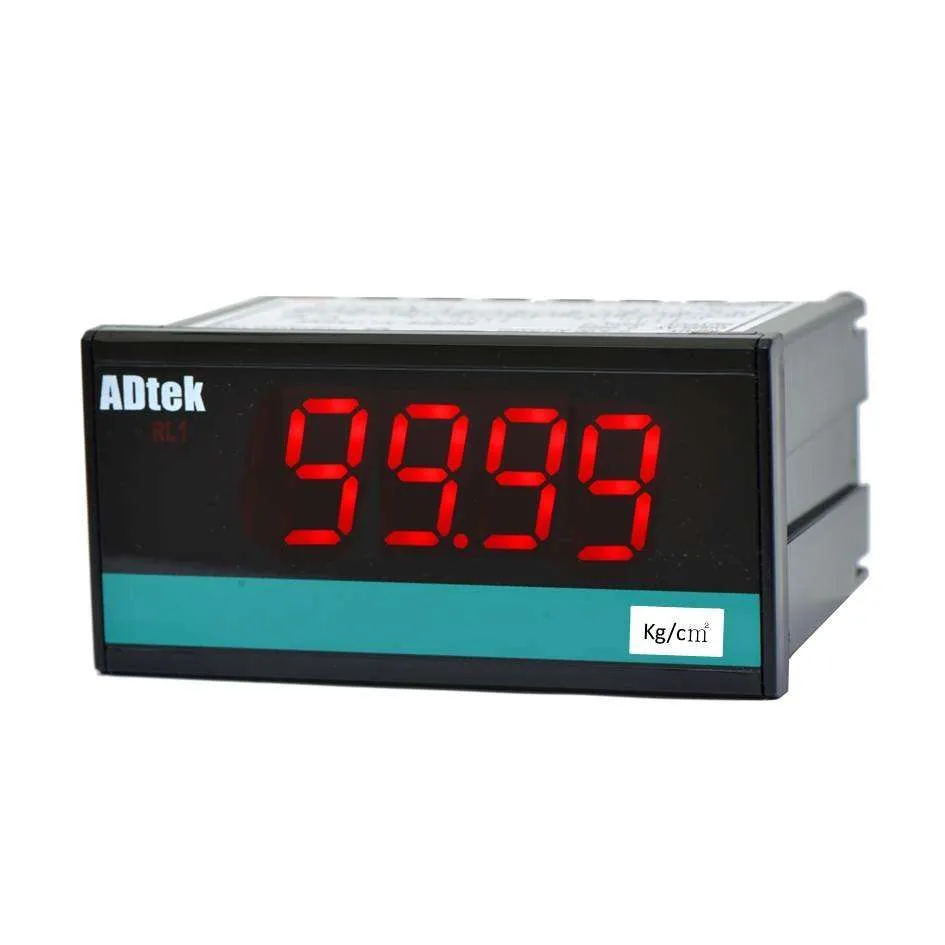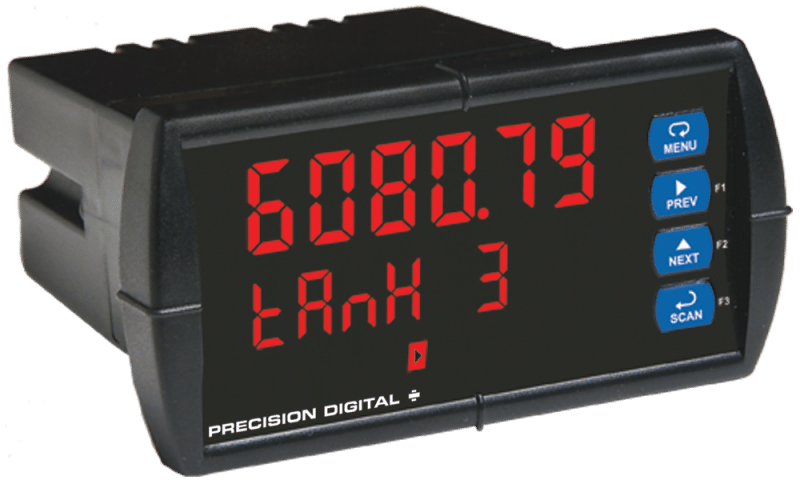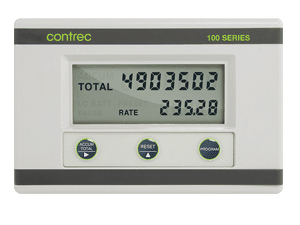The Precision Digital Vigilante II annunciators are compact, panel-space saving, four, and eight-channel annunciators loaded with features found previously in annunciators three or four times their size. Despite all the traditional annunciator features included in the Vigilantes, they are still very low-cost, easy-to-use alarm annunciators perfect for replacing stand-alone lights!
The Vigilantes are housed in shallow depth, 1/8 DIN enclosures for easy and convenient mounting. The Vigilante II can be programmed for all the common ISA alarm sequences, accept switch, transistor, and logic level inputs, and be supplied.
The Vigilantes’ industrial-grade design, NEMA 4X front, wide operating temperature range, and sunlight-readable alarm indicators make them well suited for outdoor alarm applications. Front panel buttons and screw terminal connectors located at the instrument’s rear are provided for Silence, Acknowledge, and Reset functions. A built-in horn provides an audible indication of an alarm condition, and up to two relays can be used to control external devices such as beacons, horns, or buzzers.
General
Display: PD154; Four red LED channel indicators. PD158; Eight red LED channel indicators. One green LED power indicator.
Alarm Messages: Custom printed clear adhesive labels.
Area: PD154, 1.25″ x .60″ (32 mm x 15 mm), 4 messages PD158, 1.25″ x .25″ (32 mm x 6 mm), 8 messages
User specified size and length, up to 4 lines (PD154) or 2 lines (PD158) of 14 characters of size 9 pt fonts.
Programming Methods: Rear 4-position switch for sequence selection and horn operation. Three front panel pushbuttons for NO/NC input selection, sequence option, and action.
Audible Alarm: 85 dB internal horn.
Noise Filter: 40 ms debounce on inputs and external pushbuttons.
Shared First-Out Systems: 1 ms unit-to-unit delay. Maximum of 200 units in the shared first-out system.
Non-Volatile Memory: All programmed settings are stored in non-volatile memory for a minimum of ten years if power is lost.
Power Options: 85-265 VAC, 50/60 Hz; 90-265 VDC, 20 W max; or 12-36 VDC, 12-24 VAC, 6 W max.
Fuse: Required external fuse: UL Recognized, 5 A max, slow blow. Up to 6 annunciators may share one 5 A fuse
Isolated Power Supply: 24 VDC ± 10% @ 200 mA max Standard on 85-265 VAC powered units only.
Isolation: 4 kV input/output-to-power line.
Overvoltage Category: Installation Overvoltage Category II: Local level with smaller transient overvoltages than Installation Overvoltage Category III.
Environmental: Operating temperature range: -40 to 65°C.
Storage temperature range: -40 to 85°C. Relative humidity: 0 to 90% non-condensing.
Connections: Removable screw terminal blocks accept 12 to 22 AWG wire.
Enclosure: 1/8 DIN, high impact plastic, UL 94V-0, front color: black
Mounting: 1/8 DIN panel cutout required. Two-panel mounting brackets included.
Tightening Torque: Screw terminal connectors: Gray: 4.5 lb-in (0.5 Nm). Green: 5 lb-in (0.5 Nm)
Overall Dimensions: 4.68″ x 2.45″ x 4.19″ (62 mm x 119 mm x 106 mm) (H x W x D)
Weight: 9.6 oz (272 g)
UL File Number: E160849; 508 Industrial Control Equipment
Warranty: 3 years parts & labor
Inputs
Input Types: NO or NC switches: No external excitation required.
Open collector transistor: Open circuit voltage approx. 3.3 VDC.
Logic Levels: LOW = 0 to 0.9 VDC, HIGH = 2.4 to 28 VDC
Update Rate: 41 ms following alarm state; 1 ms for alarm state clear.
Sequences: Input follower, ISA Sequences A, F1A, F2A, F3A, M, F1M, and F3M per ISA Standard ISA-18.1-1979 R2004.
Sequence Options: A, F1A, F2A, F3A, M, F1M, F2M, and input follower with selectable options -1 (silence pushbutton), -4 (no lock-in), and -6 (no horn) per ISA Standard ISA-18.1-1979 R2004
Relays
Rating: 2 SPDT (Form C); rated 3 A @ 30 VDC or 3A @ 250 VAC resistive load; 1/14 HP @ 125/250 VAC for inductive loads.
Electrical Noise Suppression: A suppressor (snubber) should be connected to each relay contact switching inductive loads to prevent disruption to the microprocessor’s operation. Recommended suppressor value: 0.01 µF/470 Ω, 250 VAC (PDX6901).
Relay Operation: Relay 1: Alarm state until the alarm is acknowledged. Relay 2: Alarm state if any channel indicating an alarm condition.
Fail-Safe Operation: Programmable independent for each relay.
Note: In fail-safe mode, the relay coil is energized in non-alarm condition. In case of power failure, the relay will go to the alarm state.


